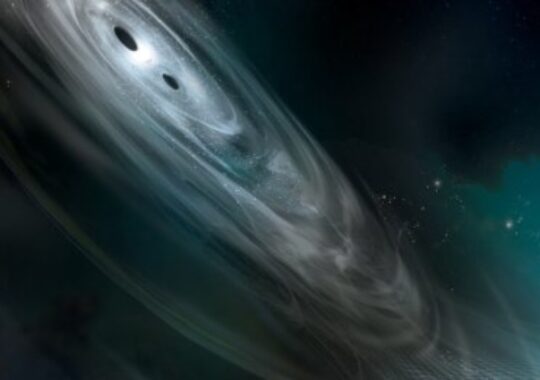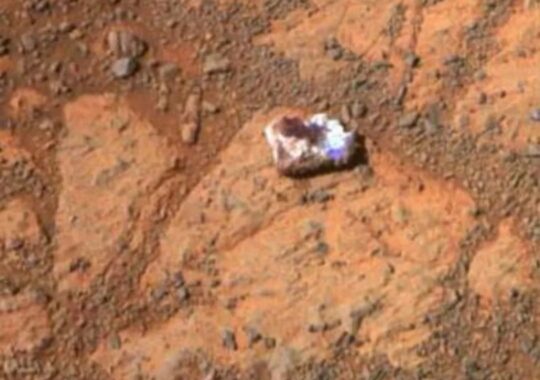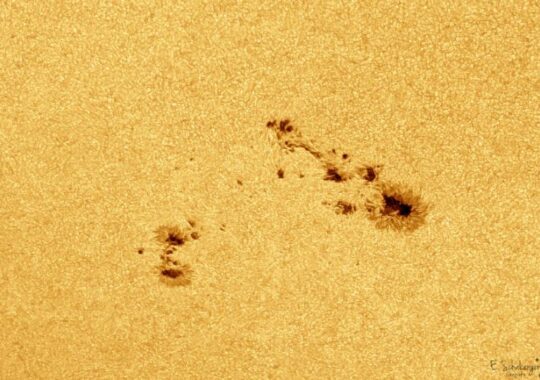There is a remote possibility that Earth’s population won’t have access to the internet for months within the next decade due to an impending solar storm.
The U.S. economy could suffer daily losses of billions of dollars and production and supply chains for essential materials like food and medicine could be hindered if the internet fails on that scale. NASA scientists, on the other hand, have launched a probe that will allow them to study and prepare for how a solar storm could affect the planet’s infrastructure in an effort to avoid such a catastrophe.
So, how likely is it that the “internet apocalypse”—a term coined by many—will strike humanity?
NASA claims that solar wind is produced by the outward expansion of charged particles from the Sun’s corona on the outermost atmosphere. A crew of four volunteers from NASA will be locked in a virtual “Mars” for 378 days. Compared to wind on Earth, which typically blows at speeds of one to two million miles per hour, it is significantly faster and less dense.
Solar storms may have an impact on Earth’s atmosphere because of the winds they produce close to the sun. According to NASA, the storms, which release solar particles and electromagnetic radiation toward our planet, are driven by solar flares and coronal mass ejections.
As the recurrence of coronal mass launches increments at the level of its 11-year cycle, which NASA said is supposed to be in 2025, electromagnetic action on the sun tops. That so-called “solar maxiumum” means that there will be more disruptions on our planet, which is bad news for us humans.
The movement can possibly cause mathematical tempests, which could block satellite transmissions, radio correspondences, web and electrical power matrices — bringing about an innovative breakdown.
According to one study from two years ago, the chances of a storm causing a catastrophic internet outage are extremely low. There is a small chance that the solar storm could cause an outage. A 2021 study by computer science expert Sangeetha Abdu Jyothi at the University of California, Irvine found that a 1.6% to 12% chance exists that an extended disruption to the internet could occur within the next decade as a result of a solar storm. However, the threat is still nothing to scoff at.
The study goes on to estimate that a failure of that magnitude could cost the U.S. economy as much as $7 billion per day, despite the fact that the risk of internet disruption in the United States is higher than in Asia.
“The crew is not drinking urine”: NASA system helps astronauts urinate and recycle sweat This kind of disruption is not unheard of. In 1989, a devastating solar storm shut down power to Quebec for 12 hours, putting millions of Canadians in darkness and forcing schools and businesses to close.
Be that as it may, it was in 1859 when the most extraordinary sun powered storm on record, the Carrington Occasion, unleashed its destruction. The tempest started fires at transmit stations and kept messages from being sent.
The Parker Solar Probe was launched by NASA many years ago in an effort to avert what the Weather Channel referred to as the “internet apocalypse” in a June report. A NASA probe could be the key to preventing internet failure.
According to NASA, the spacecraft was launched in 2018 and began its journey in 2021, which would bring it close to the surface of the sun and allow it to enter its upper atmosphere, or corona, where the solar wind is produced. It was there where the test persevered through cruel circumstances to assemble imperative data about the sun, which NASA specialists expressed lead to new bits of knowledge about what sun based breezes arrive at supersonic velocities and mean for the bigger space climate framework.
According to a statement released at the time, the agency stated, “Just as landing on the Moon allowed scientists to understand how it was formed, touching the very stuff the Sun is made of will help scientists uncover critical information about our closest star and its influence on the solar system.”
NASA also found out earlier this year, as a result of the probe mission, that jetlets—small jets of energy at the base of the corona—may be largely responsible for fueling the solar wind.
“The discoveries make it a lot more straightforward to make sense of how the sun powered breeze is sped up and warmed,” Craig DeForest, a sun based physicist at the Southwest Exploration Organization in Rock, Colorado, said in NASA’s report. ” Although we are not yet finished with the puzzle, this represents a significant advancement in our understanding of a fundamental physics-related problem in solar systems.
More recently, NASA developed a brand-new computer model that, like a cosmic tornado siren, “could sound the alarm for dangerous space weather” by incorporating satellite data and artificial intelligence. With a 30-minute warning, the new technology can predict where a solar storm will hit Earth. These crucial minutes could be used to prepare for and prevent severe impacts on power grids and other critical infrastructure.
Artificial intelligence has been used by an international group of researchers at the Frontier Development Lab, a public-private partnership comprised of NASA, the U.S. Geological Survey, and the U.S. Department of Energy, to investigate connections between the solar wind and geomagnetic disturbances that disrupt technology. Researchers can train computers to recognize patterns based on previous examples using an AI technique known as “deep learning.”
“Just as tornado sirens wail in advance of threatening terrestrial weather in towns and cities across America,” NASA researchers predict, “there could one day be solar storm sirens that sound an alarm in power stations and satellite control centers around the world.”
Disclaimer: The views, suggestions, and opinions expressed here are the sole responsibility of the experts. No Clear Insight Research journalist was involved in the writing and production of this article.





